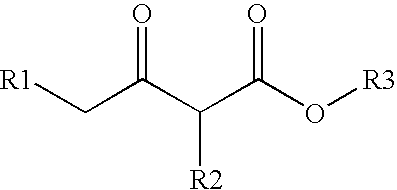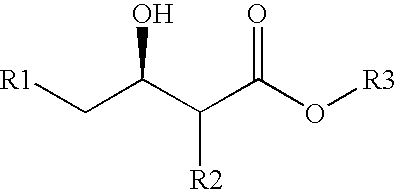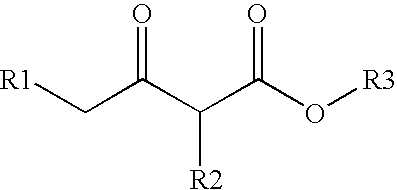Method for modifying enzyme and oxidoreductive variant
- Summary
- Abstract
- Description
- Claims
- Application Information
AI Technical Summary
Benefits of technology
Problems solved by technology
Method used
Image
Examples
example 1
Modeling of the Three Dimensional Structure of Crd Enzyme Originating From Candida magnoliae IFO 0705
[0138] Based on the amino acid sequence (WO 98 / 35025) of a CRD enzyme derived from Candida magnoliae IFO 0705 (CMCRD enzyme), multiple amino acid sequence alignments with reduction enzymes registered in the Protein Data Bank (PDB) having known three dimensional structures (PDB ID: 1AE1, 2AE2, 1FMC, 1CYD, 1HDC, 1YBV, 1BDB) were prepared utilizing a ClustalX program [Thompson, J. D. et al., Nucleic Acid Res. 22, 4673-4680 (1994)]. Next, the three-dimensional alignment (conformational alignment) of these reduction enzymes having known three dimensional structures was carried out using a MAPS program [G. Lu, J. Appl. Cryst. (2000), 33: 176-183]. This was followed by an examination of the correspondence to amino acid sequences of the parts having similar three dimensional structures. The above multiple alignments obtained from the amino acid sequences alone were adjusted based on this thr...
example 2
Designing of CRD Enzyme Variant
[0153] From the three dimensional structure models of a wild-type CMCRD enzyme (depending upon NADPH) obtained in Example 1 and those of analogous enzymes, a NAD (NADP) binding motif (Gly-(X).sub.3-Gly-(Ile / Leu-)-Gly-(X).sub.10-Gly) was identified in the coenzyme binding region. Furthermore, from the amino acid residues existing on this bind loop, amino acid residues greatly contributing to the NADP binding were identified by electrostatic potential calculation according to the following procedures. First, in the three dimensional structure of the CMCRD enzyme-NADP complex, a negative charge of -1 alone (where the point charge of all the other atoms is zero) was placed on the phosphorus atom position of 2'-phosphoric acid residue of NADP, followed by finding an electrostatic potential which this charge yielded. Next, the point charge was given to all the amino acid residue atoms, followed by calculating electrostatic contribution of the found electrost...
example 3
Making of CRD Enzyme Variant
[0167] A DNA having a nucleotide sequence of SEQ ID NO:1 was synthesized, followed by transforming E. coli JM109 (manufactured by Takara Shuzo Co., Ltd.) with 0.2 .mu.g of a plasmid pUCSYN181 (manufactured by Takara Shuzo Co., Ltd.) prepared by subcloning the synthesized DNA into the PstI site of pUC 18. The plasmid was recovered from the obtained transformant using FlexiPrep (manufactured by Pharmacia, Inc.) and digested with EcoO109I, followed by subjecting the resultant to preparative polyacrylamide gel electrophoresis to isolate a 167-bp DNA fragment. On the other hand, a plasmid pNTS1 (WO098 / 35025) was digested with EcoO109I, subjected to preparative agarose gel electrophoresis to recover an approx. 3.2-kb DNA fragment, and then the DNA fragments were treated with BAP. Both DNA fragments were ligated using Takara Ligation Kit Ver. 2 (manufactured by Takara Shuzo Co., Ltd.), thereby obtaining a recombinant plasmid pNTS1M1 in which a mutant gene was in...
PUM
| Property | Measurement | Unit |
|---|---|---|
| Fraction | aaaaa | aaaaa |
| Angle | aaaaa | aaaaa |
| Angle | aaaaa | aaaaa |
Abstract
Description
Claims
Application Information
 Login to View More
Login to View More - R&D
- Intellectual Property
- Life Sciences
- Materials
- Tech Scout
- Unparalleled Data Quality
- Higher Quality Content
- 60% Fewer Hallucinations
Browse by: Latest US Patents, China's latest patents, Technical Efficacy Thesaurus, Application Domain, Technology Topic, Popular Technical Reports.
© 2025 PatSnap. All rights reserved.Legal|Privacy policy|Modern Slavery Act Transparency Statement|Sitemap|About US| Contact US: help@patsnap.com



